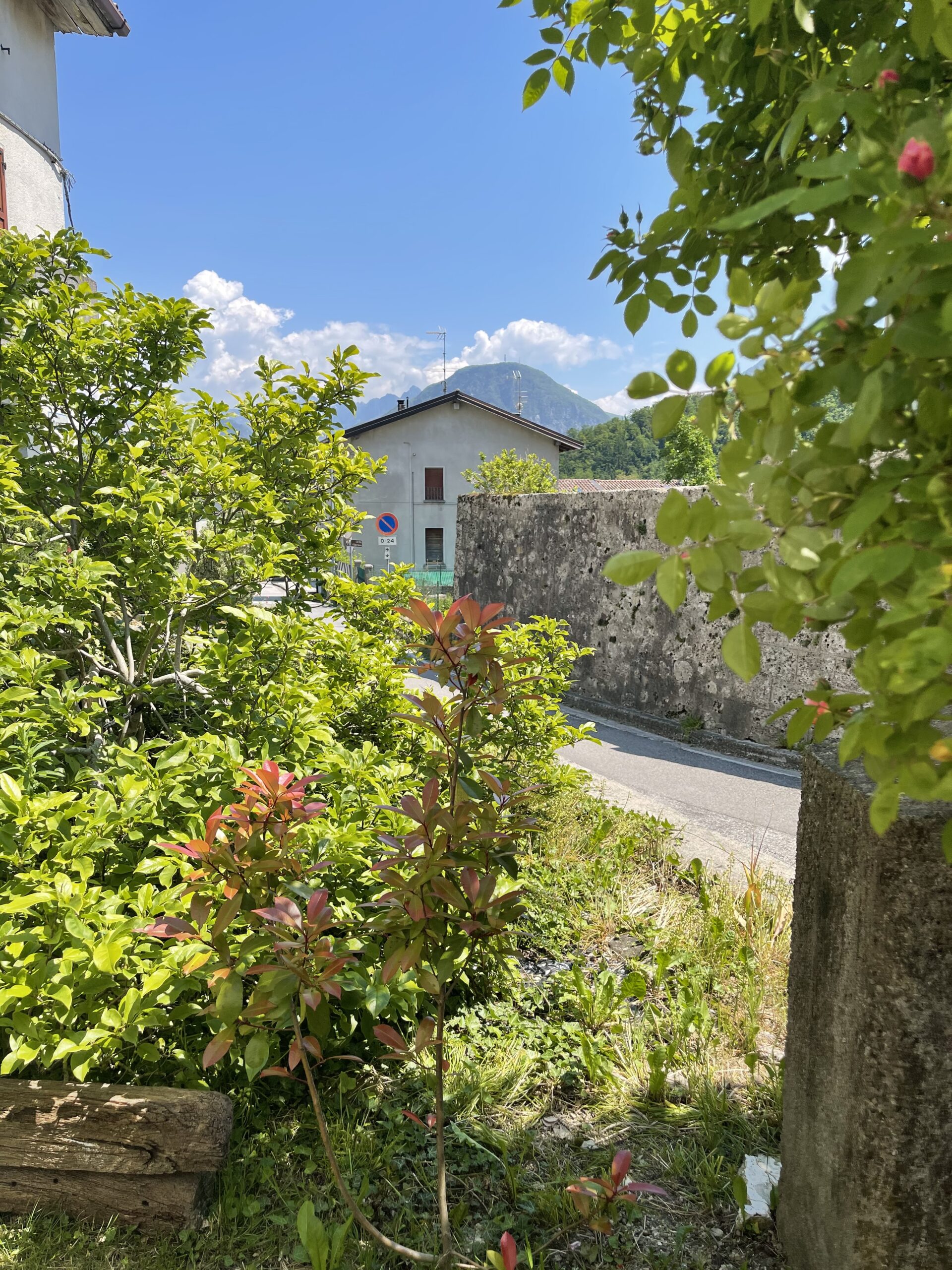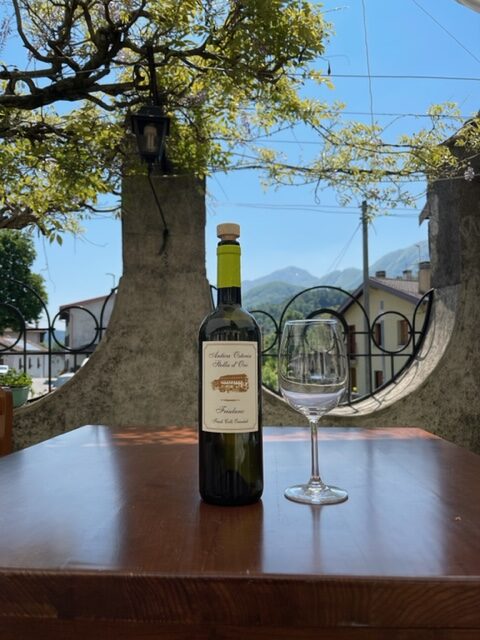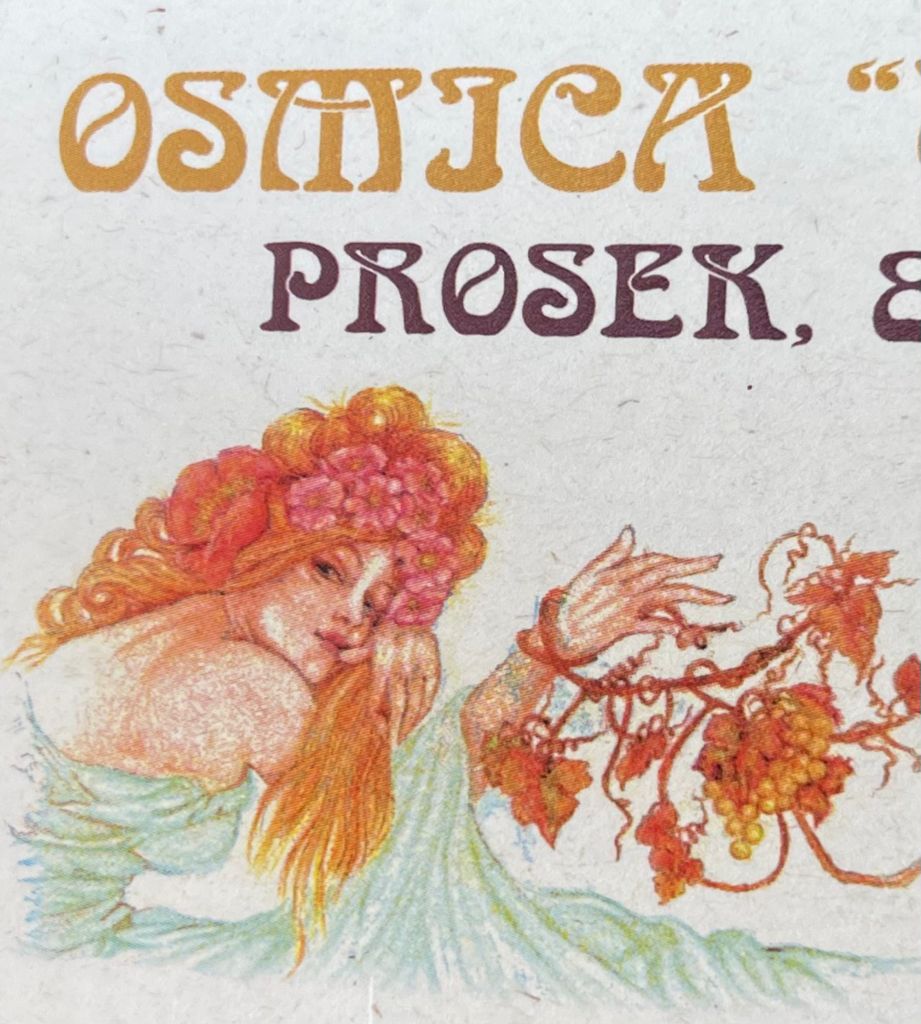Nestled among the Alps, near the Austrian border, Carnia in the Friuli Dolomites is a breathtaking, unspoilt region. With its pristine nature park, winding rivers, majestic mountains, and quaint villages, Carnia is a rare place where culture has been well-preserved. The locals even speak their own language, Ladino, in addition to Italian. Known for their hard work and quiet demeanor, these mountain people have strong connections to Italy, Austria, and Slovenia, which is reflected in their cuisine.



Exploring Antica Osteria Stella d’Oro
In the charming village of Villa di Verzegnis, I visited Antica Osteria Stella d’Oro, a historic tavern nestled in a green valley. This restaurant, beloved by locals and recognized as one of the best in Carnia, is a haven for traditional food lovers. Owned by Sara Pachini and Francesco Marzona, it showcases Carnia’s culinary treasures, including cjarsons (a local pasta), goose gnocchi, game, and radic di mont, a famed local vegetable.



A Rich Wartime History
I am in a place with a lot of history. A beautifully preserved and impressive carnic fogar, or open fire in the living room, from 1600 is the charming part. So much for the tour of history in the restaurant. But I am also interested in the other past, which I discovered by chance. A piece of past of which I see nothing in the building. A logical choice by the owners, it turns out.
In 1944, the village of Villa di Verzegnis was occupied by the Cossacks, recruited by the Nazis for raids and reprisals against the partisan movement that was very active in the region. Numerous Friulian towns suffered the same fate during those months. From July 1944, the first convoys of Cossacks and Caucasians, who were themselves on the run, began to arrive at Carnia station. About 40,000 arrived. A considerable number considering that Carnia had a population of 60,000 at the time. Carnia was even presented by the Germans as the “Kosakenland in Nord Italien”. It was a forced cohabitation that created fear and terror but also, in some cases, discreet relationships between the Cossack families and the inhabitants of the villages.
Fact that General Pyotr Krasnòv with his family, settled here in the Stella d’ Oro inn and stayed until the end of the war, is of course still sensitive. General Krasnòv had been an ally of the Germans since his wartime actions in 1918 against the Red Army. The Cossack illusion of regaining the independence of yesteryear vanished under the blows of the Soviet offensive at Stalingrad in 1942.
In late January 1943, the Red Army won the final victory, forcing the German army and those who had flanked them to their retreat to the West. Countless civilians followed along the way fuelled by the promise of refuge in a land similar to the one they had left behind. In the summer of 1944, they were given the promise of a temporary homeland, solemnised in the Rosenberg-Keitel resolution, to occupy Carnia.
The inhabitants of the communities in Carnia were long forced to live with the Cossacks, allies of the Germans and republicans. Many would have arrogantly installed themselves there. In every house, at least one room was occupied by the Russians, as the new residents were then generally called.
Despite this turbulent history, today’s Stella d’Oro is a peaceful, inviting restaurant with a charming terrace and a relaxed atmosphere. The owners have preserved its legacy, transforming it into a must-visit destination for travelers exploring Carnia.
Francesco Marzona and his brothers also run an azienda agricola (an agricultural farm), where they grow many of the vegetables, fruits, and grains served in the restaurant. This commitment to local, organic produce ensures that each dish reflects the natural bounty of Carnia’s land, keeping the tradition of Italian farm-to-table dining alive.



Visiting Antica Osteria Stella d’Oro
Whether you’re a history buff or a food lover, visiting this restaurant offers a unique blend of culture and cuisine. Its rich past adds depth to the dining experience, while the fresh, local flavors make it a standout in Carnia’s culinary landscape.
Address: Antica Osteria Stella d’ Oro, Via Tolmezzo 6, Villa di Verzegnis



